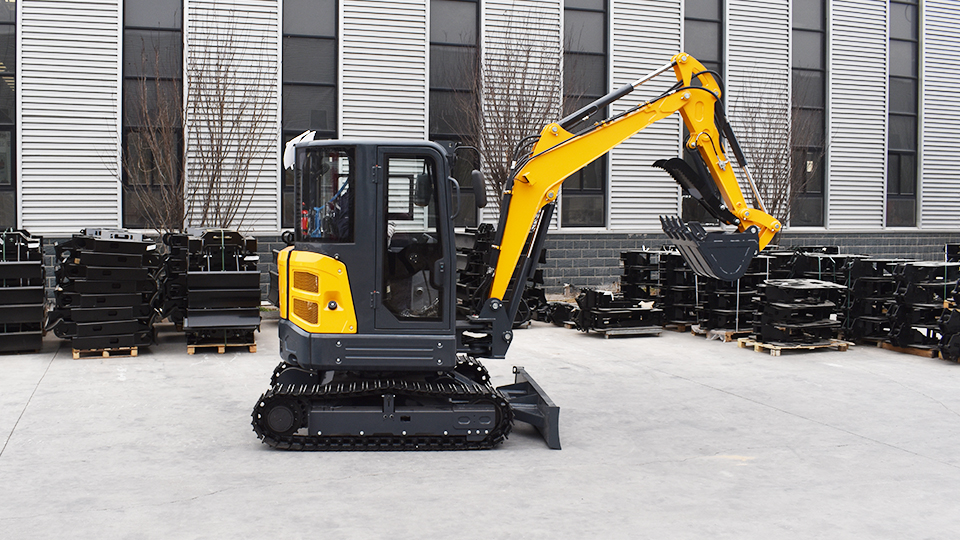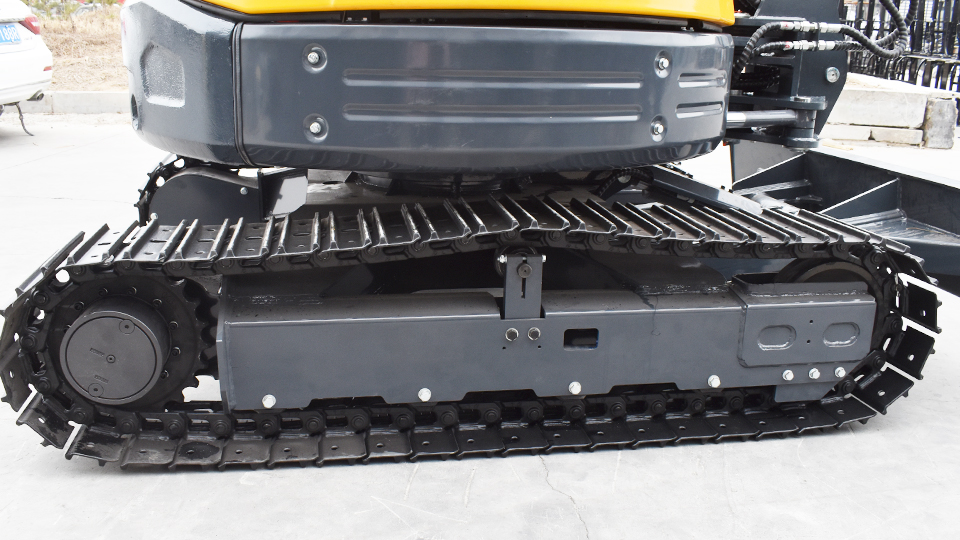Mini excavators, those agile and robust earthmoving machines, offer a compelling solution for a vast array of tasks, from intricate landscaping to demanding utility work. Their compact size allows access to confined spaces where larger excavators struggle, making them indispensable on numerous job sites. However, the seemingly simple question of "which mini excavator?" quickly reveals a complex landscape of models, each with varying capabilities and, crucially, different weights.
Choosing the right mini excavator for a specific job site hinges on a multitude of factors, and weight is a paramount consideration. An improperly sized or weighted machine can lead to inefficiencies, safety hazards, environmental damage, and even project delays. This technical article delves into the critical aspect of comparing mini excavator weights across different models and explores how this factor directly influences their suitability for various job site conditions and tasks. By understanding the nuances of weight and its implications, contractors, landscapers, and project managers can make informed decisions that optimize productivity, safety, and cost-effectiveness.
The Weight Spectrum Revisited: Tailoring to Task and Terrain
As established previously, mini excavating contractors span a significant weight spectrum, typically ranging from under one metric ton to ten metric tons. This broad range isn't arbitrary; it reflects the diverse needs of various applications and job site environments. Understanding how different weight classes align with specific requirements is the first step in selecting the appropriate model.
Ultra-Compact (0-1 metric ton): These featherweight champions excel in situations demanding minimal ground disturbance and access through narrow doorways or confined indoor spaces. Their low weight makes them ideal for tasks like indoor demolition, working in finished landscapes, or navigating sensitive underground utilities. However, their lighter build often translates to limited digging power and reach, making them less suitable for heavy excavation or large-scale material removal.
Compact (1-3 metric tons): Striking a balance between maneuverability and power, this weight class is a workhorse for general landscaping, trenching for irrigation or electrical lines, and small-scale construction projects. Their moderate weight allows for relatively easy transportation on standard trailers while providing sufficient stability and digging force for a wider range of tasks compared to ultra-compact models. They are a popular choice for residential and light commercial projects.
Mid-Range (3-6 metric tons): These mini excavators offer a significant step up in digging depth, reach, and lifting capacity. Their increased weight provides enhanced stability for more demanding excavation, foundation work, and pipe laying. While still relatively maneuverable, their larger size and weight may restrict access in extremely tight spaces. They are often employed in more substantial landscaping projects, utility installations, and smaller commercial building projects.

Larger (6-10 metric tons): Bridging the gap between mini and compact excavators, these heavier models deliver considerable power and versatility. Their weight provides excellent stability for heavy lifting and deep digging, making them suitable for larger excavation tasks, roadwork, and more demanding construction applications. However, their increased weight necessitates more robust transportation arrangements and can pose challenges on sites with soft or restricted access.
Weight as a Deciding Factor: Key Job Site Considerations
The weight of a mini excavator isn't just a number on a specification sheet; it has tangible implications for how the machine interacts with the job site and the tasks it can perform effectively and safely. Several key considerations highlight the importance of comparing weights across different models:
Ground Conditions and Stability: The bearing capacity of the soil or surface on the job site is a critical factor. Heavier excavators exert higher ground pressure, which can lead to soil compaction, rutting, and even the risk of the machine sinking in soft or unstable conditions. For delicate landscaping or working on saturated ground, a lighter model is often preferable. Conversely, heavier machines offer greater stability, particularly when digging at maximum reach or lifting heavier loads. Comparing the ground pressure specifications of different models is crucial for ensuring safe and efficient operation without damaging the work environment.
Transportation and Logistics: The weight of the mini excavator directly dictates the type of trailer and towing vehicle required for transportation. Lighter models can often be transported on standard utility trailers pulled by pickup trucks or SUVs, offering greater flexibility and lower transportation costs. Heavier models necessitate specialized, heavy-duty trailers and more powerful towing vehicles, increasing logistical complexity and transportation expenses. Considering the frequency of transport and the distances involved is essential when evaluating weight.
Site Access and Maneuverability: Confined spaces and narrow access points are often the very reason for choosing a mini excavator. Lighter and more compact models excel in these situations, allowing passage through doorways, gates, and around obstacles. Heavier and larger mini excavators, while offering more power, may struggle to navigate tight confines, potentially limiting their utility on certain job sites. Comparing the physical dimensions alongside the weight is crucial for assessing maneuverability.
Lifting Capacity and Stability: While all mini excavators can lift, their lifting capacity is directly related to their weight and stability. Heavier machines with larger counterweights can generally lift heavier loads more safely and at greater reaches. If the job frequently involves lifting and placing materials like pipes, concrete blocks, or landscaping elements, a heavier model within the acceptable ground pressure and access constraints might be necessary. Comparing the load charts at various reaches for different weight classes is vital.
Digging Force and Productivity: While not solely determined by weight, heavier mini excavators often feature more powerful hydraulic systems and a more robust overall construction, translating to greater digging force. This can lead to increased productivity, especially when working in hard or compacted soil. However, for lighter tasks in softer materials, a lighter machine with sufficient digging force might be more fuel-efficient and just as productive.
Attachment Compatibility and Performance: The weight of the base machine can also influence the types and sizes of attachments it can effectively operate. Heavier machines generally have the hydraulic power and stability to handle larger and more demanding attachments like hydraulic breakers, augers, or mulchers. Matching the weight and hydraulic capabilities of the excavator to the intended attachments is crucial for optimal performance.
Cost Considerations: Generally, heavier and more powerful mini excavators come with a higher purchase or rental price. Additionally, transportation costs for heavier machines are typically higher. Carefully evaluating the specific tasks required and the frequency of use can help determine if the added cost of a heavier machine is justified by increased productivity or capability.
A Practical Approach to Weight Comparison: The Decision-Making Process
Choosing the right mini excavator based on weight involves a systematic evaluation of job site requirements and machine specifications. Consider the following steps:
Define Project Requirements: Clearly outline the types of tasks to be performed (e.g., trenching depth and width, lifting requirements, material removal volume), the materials to be worked with (e.g., soil type, rock), and the anticipated frequency and duration of these tasks.

Assess Job Site Conditions: Evaluate the terrain (e.g., flat, sloped, uneven), soil stability (e.g., firm, soft, saturated), and accessibility (e.g., narrow passages, confined spaces, overhead obstructions). Identify any weight restrictions or ground pressure limitations.
Determine Transportation Needs: Consider how the mini excavator will be transported to and from the job site. Evaluate the required trailer capacity and towing vehicle capabilities. Factor in the frequency of transport and associated costs.
Research and Compare Models: Based on the project requirements and site conditions, research mini excavator models within the relevant weight classes. Pay close attention to the manufacturer's specifications for operating weight, ground pressure, lifting capacity at various reaches, digging force, and physical dimensions. Utilize online comparison tools and consult with equipment dealers to gather comprehensive information.
Consider Attachments: If specific attachments are required, ensure that the chosen mini excavator model is compatible and has the necessary hydraulic power and stability to operate them effectively. Factor in the weight of the attachments when considering transportation and ground pressure.
Evaluate Cost-Benefit: Compare the purchase or rental costs of different models, along with transportation expenses and potential fuel consumption differences. Determine if the increased capability of a heavier machine justifies the higher cost for the specific project needs.
Test and Evaluate (if possible): If feasible, consider renting or demoing different mini excavator models on a similar job site to assess their performance, maneuverability, and suitability for the specific tasks and conditions. This hands-on experience can provide valuable insights beyond specifications alone.
Conclusion: Finding the Optimal Weight Balance
Selecting the right mini excavator for a job site is a nuanced process that requires careful consideration of various factors, with weight being a critical determinant. By understanding the weight spectrum of mini excavators and how different weight classes align with specific tasks and terrain, contractors and project managers can avoid the pitfalls of using an undersized or oversized machine. Comparing the operating weight, ground pressure, lifting capacity, and transportation requirements of different models ensures a safe, efficient, and cost-effective operation. Ultimately, the ideal mini excavator is one that strikes the optimal balance between power, maneuverability, stability, and weight, perfectly tailored to the unique demands of the job site.
Post time:Sep-25-2020
